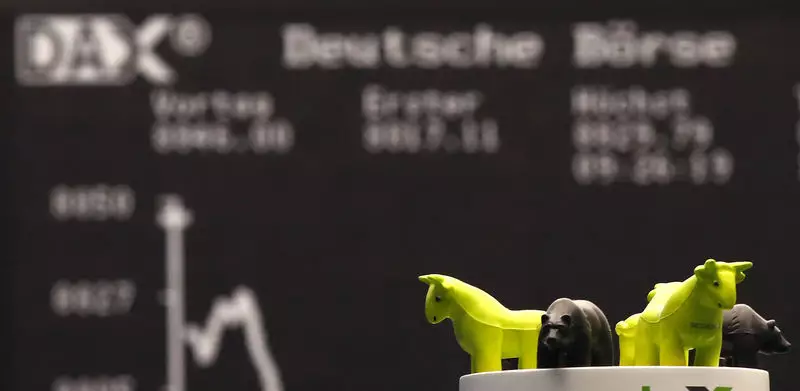European stock markets experienced a downturn on Tuesday, as investors eagerly awaited the release of regional inflation data to gain insight into potential future interest rate cuts by the European Central Bank. The DAX index in Germany saw a 0.6% decline, the CAC 40 in France fell by 0.6%, and the FTSE 100 in the U.K. dropped by 0.4%. The upcoming release of June inflation data for the eurozone is expected to show a slight decrease in both headline and underlying measures. Economists predict a 2.5% annual growth in the headline figure, down from 2.6% in May, and a 2.8% annual core number, excluding volatile food and energy prices, down from 2.9% in May.
The European Central Bank made a rate cut in June before the U.S. Federal Reserve, but did not commit to any further actions, citing concerns over high inflation rates. Belgium’s central bank governor, Pierre Wunsch, expressed potential for a second rate cut based on forecasts, although he emphasized that this cut was not pressing. The ECB may wait until its next projections are released in September to make further decisions regarding interest rates.
Political developments are also impacting European markets, with the far-right National Rally winning the first round of French parliamentary elections. The outcome of the upcoming elections remains uncertain, with potential implications for eurosceptic and anti-immigrant policies. In the U.K., upcoming elections could lead to a shift in power to the opposition Labour Party, potentially affecting trade relations with Europe.
Retail Sector Performance
The retail sector in Europe saw fluctuations, with J Sainsbury stock falling by 1.4% following a report of slowing sales in the first quarter. Similarly, Sodexo stock dropped by 3.2% after reporting lower-than-expected third-quarter sales. Despite these challenges, Sodexo confirmed its 2024 outlook, highlighting resilience in the face of market pressures.
Crude oil prices remained steady on Tuesday, with expectations of increased fuel demand during the U.S. summer season. U.S. crude futures traded slightly higher at $83.48 per barrel, while the Brent contract also increased to $86.78 per barrel. Expectations of rising gasoline demand in the U.S. are driving optimism in the oil market, particularly with the upcoming Independence Day holiday and summer travel season. Traders are monitoring U.S. crude stockpile data from the American Petroleum Institute and potential disruptions from Hurricane Beryl on oil refining and offshore production in the Gulf of Mexico.
The decisions of the European Central Bank, political developments, retail sector performance, and oil prices are all interconnected factors influencing European stock markets. Investors must remain vigilant and adaptable to navigate the dynamic landscape of global financial markets.

